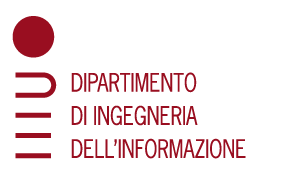Submitted by admin on
Present appointment: Head of the Coordination Office for the Scientific Programme Directorate of Science and Robotic Exploration European Space Agency Education: Graduated in Physics with full marks and honours at Univ. of Lecce (Italy), 1982. Ph.D. in Physics (area: Astrophysics) at Univ. of Bari (Italy), 1986. Career: 1987-1988: Research Fellow in the Space Science Department at ESA-ESTEC (Noordwijk, NL). 1988-1993: Researcher in Physics at Engineering Faculty, University of Cassino (Cassino, I). 1993-2001: Astronomo Associato at Osservatorio Astronomico di Capodimonte (Napoli, I). since 2001: Astronomo Ordinario at INAF – Osservatorio Astronomico di Capodimonte, Napoli. Nov. 2005 – March 2010: Director INAF - Osservatorio Astronomico di Capodimonte, Napoli. April 2010 – Sept. 2013: Head, Solar System Missions Division - Directorate of Science and Robotic Exploration - ESA Since Oct. 2013 Head of the Coordination Office for the Scientific Programme - Directorate of Science and Robotic Exploration - ESA Main research areas: Study, design and realisation of instruments for space missions dedicated to the exploration of the solar system. Laboratory simulations and analyses of cosmic dust and planetary materials. Principal Investigator of the GIADA experiment - ESA "Rosetta" mission (2001-2010) – now CoI Co-Principal Investigator of the SIMBIO-SYS experiment - ESA "BepiColombo" mission (2004-2010) – now CoI Team Coordinator of the MEDUSA experiment - ESA "ExoMars" mission (2002-2009) Co-Investigator of the VIRTIS experiment - ESA "Rosetta” mission (since 1999)
Rosetta is the ESA cornerstone mission to chase, go into orbit around, and land on a comet. It will study the Jupiter-family comet 67P/Churyumov-Gerasimenko with a combination of remote sensing and in situ measurements. The spacecraft will orbit the comet and release the Philae lander, which carries a suite of instruments for imaging and sampling the comet nucleus. The mission will track the comet through perihelion, examining its behaviour before, during and after. The spacecraft was launched from Kourou aboard an Ariane 5G+ on 2 March 2004. It required four gravity assists for its journey, one by Mars and three by Earth. Rosetta had already flown by the asteroids 2867 Steins (in 2008) and 21 Lutetia (in 2010), before entering deep space hibernation in June 2011. Following the exit from hibernation on 20 January 2014, the spacecraft’s instruments will be checked as it continues on its journey to 67P/Churyumov-Gerasimenko. Rosetta’s main goals will be reached in 2014. The spacecraft is expected to arrive at the comet in August 2014, and deploy the lander in November 2014. I will present the main features of the Rosetta mission and the highlights of the scientific objectives achieved so far.






